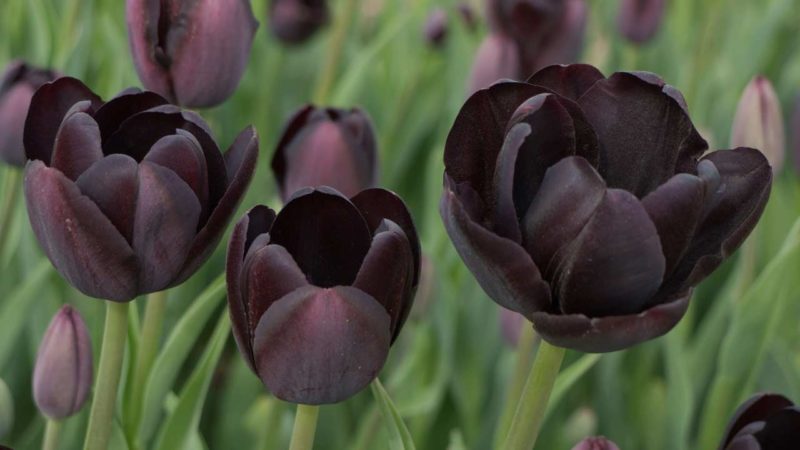Best Plants For Landscaping Around Pool
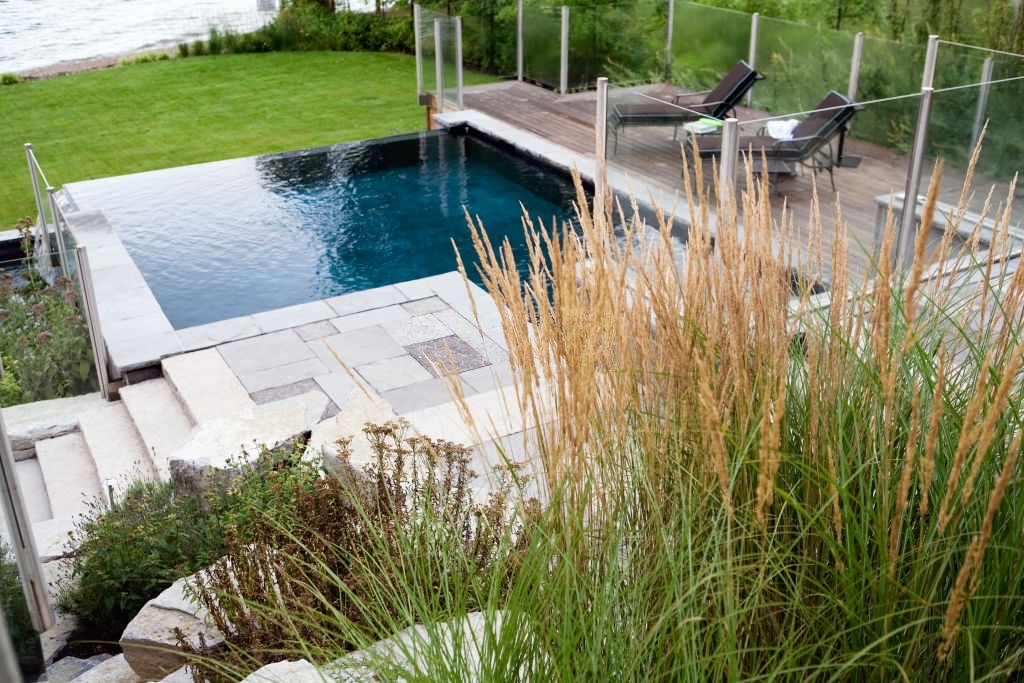
Landscaping around a pool can make your pool look attractive, but it is essential to carefully choose the pool plants. Right pool landscaping plants can enhance the overall look and can make your pool pop.
There are various pool landscaping ideas that you can follow to make your pool area look beautiful. It is essential to choose plants with less leaf litter. Trees with excessive pollen, budding debris, or berries can cause extra work.
Moreover, trees with extensive root systems can cause damage to the pool plumbing or pool walls.
Now the question is which pool plants are best for landscaping around the pool?
Here is an article with the best plants for landscaping around the pool. But before exploring the pool plants, let’s have a look at the factors that impact the pool plant selection.
Things to Consider for Selecting Pool Plants
Shade – If you want to shade around your pool, then choose the tree accordingly. You can opt for trees like a pergola with vines or cabana for landscaping around the pool.
Privacy – If you want to create a plant wall for managing privacy, then you should opt for fast-growing evergreens. Plant them on both sides of the pool.
Climate – Pools in the temperate hardiness zones can have more variety of plants than the others.
Beauty – Pool plants add a perfect touch to the landscaping around the pool. Flowering trees and deciduous trees are pretty, but they can cause a mess.
Leaf Drop – Keep in mind choosing a tree that has minimal leaf drop to avoid the mess, You will not want to spend your day cleaning the seeds, fruits, leaves, and other debris from your pool filter.
Root System – Roots can cause the concrete near the pool to crack. Moreover, it can also damage the pool walls and plumbing.
Theme – The selected landscaping idea around the pool should be in contrast with the theme of your living space.
Best Pool Plants for Landscaping Around Pool
Citrus
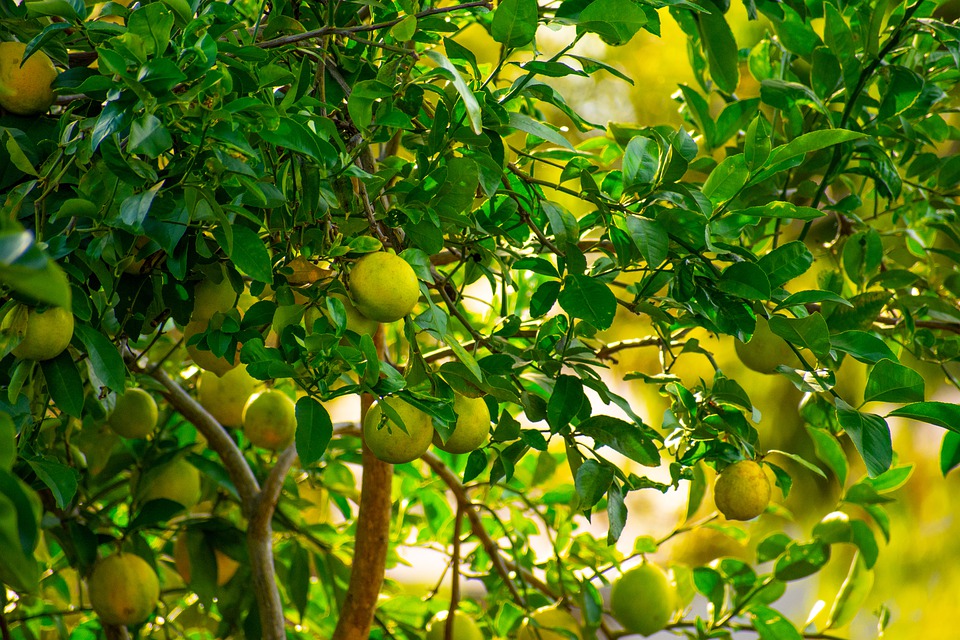
Citrus trees are perfect for adding personality and color to your backyard pool landscaping area.
Certain varieties of citrus trees are perfect for growing in small areas or containers.
You can grow citrus in containers around your poolside, and the best part is that you can move it around in order to protect it from the sun.
If you find dwarf citrus, then it is the best choice for your pool landscaping area.
The plant can grow in different soil conditions, but the preferred is sandy loam.
The color varieties of this plant include green foliage, and it requires full sun.
This plant is perfect for adding a lush touch to your pool landscaping area.
Japanese Maple

These plants are native to Japan and Korea. They are considered as small trees or large shrubs.
Japanese maples are usually slow growers, and they barely grow more than 20 feet.
These trees are known for changing leaves and shape.
They are often grown in sheltered locations as they do not respond properly to windy conditions.
In the case of a hot environment, they require plenty of water. They grow in moist soil, so do not allow it to dry.
In order to grow, the Japanese maple requires full sun to part shade.
The color varieties of these plants include burgundy foliage, dark green or light green.
Palm

Palms are a perfect choice for tropical or subtropical climates.
The only disadvantage is that the roots of this pool plant are that their roots grow straight down. They have the habit of spreading in a narrow manner.
If you want to create a privacy wall, then you can grow them in clusters or groups.
Below mentioned are some palm trees that you can grow near the poolside.
- Cane palm
- Sago palm
- Cane palm
- Windmill palm
- Queen’s palm
After establishing, palm trees require water only twice a month.
However, you should water them many times a week to help them in becoming established. The color varieties include medium-green foliage.
Floss Silk
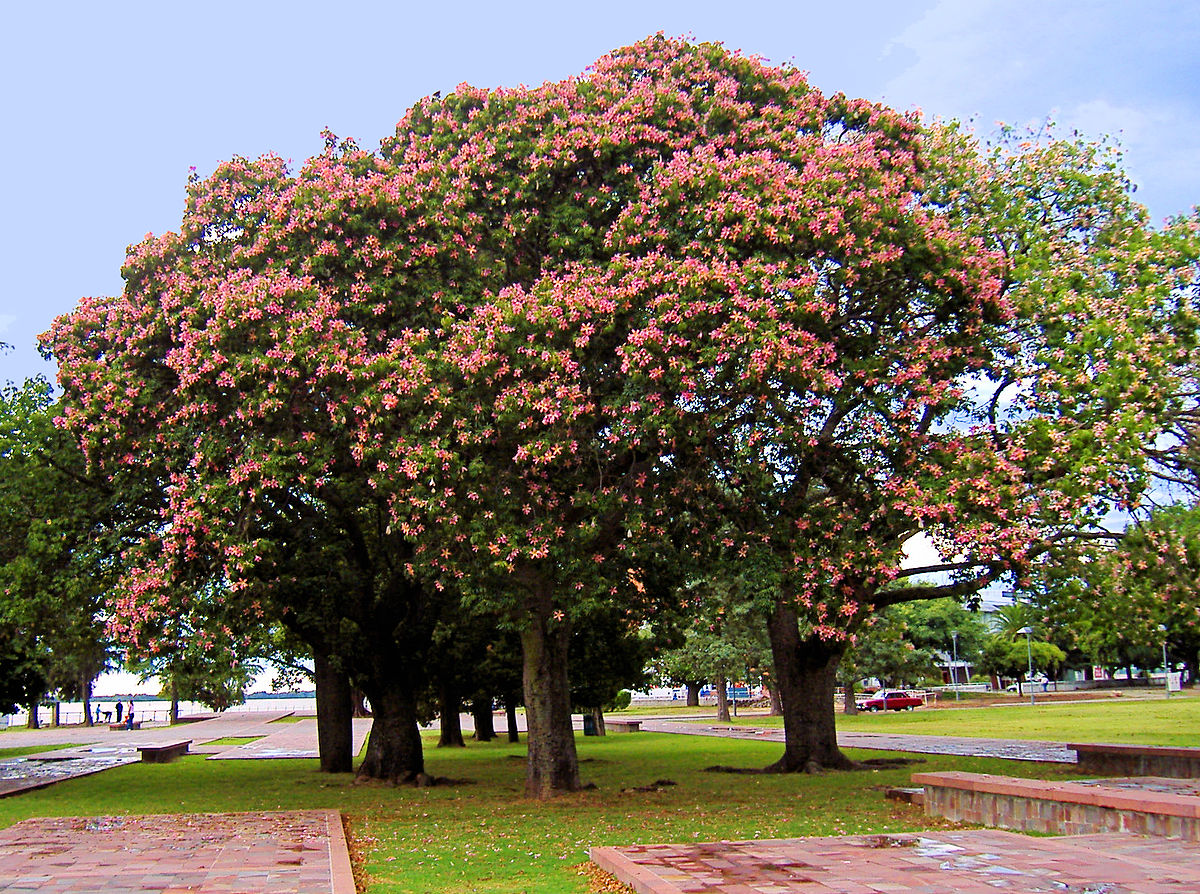
Floss silk is native to Brazil and other countries of South America.
They are popularly grown in the western United States and California.
These trees can be easily identified by studded thorns or large spikes on their branches and trunk.
You can not plant this tree next to the pool, but it can reach a height of around 60 feet and a width of 30 feet.
During the summer, they get large, large pink flowers, and in spring, they are followed by large capsules.
These capsules split and form strings of whits floss. The color varieties of these plants include dark green foliage and pink flowers during fall.
Banana

Bananas are herbs and are native to southeast Asia. They are fast-growing and have thick stems.
They spread by underground roots in order to form clumps that are around 6 to 10 feet wide.
Their large and broad leaves give them a tropical look, but winds can easily tear these leaves.
For using them to create landscaping around the pool, opt for tall varieties like Cuban Red. It can grow around 25 feet.
They require sheltered locations in order to protect them from winds and cooler temperatures as they can cause them to die.
PRO TIP
Avoid growing the banana trees in temperate climates unless you can grow them in small pots that can be moved indoors.
Hinoki Cypress

Hinoki cypress is also known as false cypress. It can grow up to 75 feet tall.
In order to grow them in creating backyard pool landscaping areas, you can choose the one that grows from 2 to 25 feet tall.
You can also opt for dwarf varieties, and they are a perfect choice for poolside rock gardens.
They add density and texture and do not take much space. They are an amazing choice to add lush landscaping around the pool.
Palo Verde
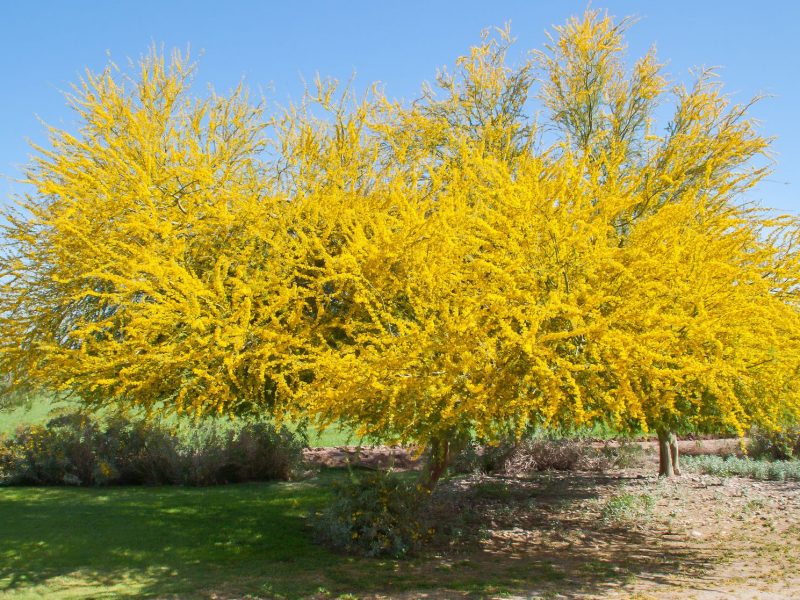
Palo Verde trees are drought-tolerant, which makes them a perfect choice for drought-tolerant areas, which makes them a perfect choice for arid regions.
The trees are famous for their willow-tree-like branches, green bark, and leaves. They are also popular for beautiful spring blossoms.
The top varieties of Palo Verde include Sonoran, Mexican, Foothill, and Blue.
The mature height of these plants ranges from 20 to 40 feet on the basis of variety. Make sure to plant these trees in well-drained soil.
Desert Ironwood

It is also known as hop hornbeam and is a small tree with sparse foliage and slim trunk.
They grow up to 25 feet tall and have a delicate texture like tissue paper.
The color varieties of these plants include white or pink flowers in spring and pale green foliage.
PRO TIP
Keep in mind not to overwater these plants as they grow in arid conditions. It is better to plant them away from trees that need more water.
Fruitless Olive
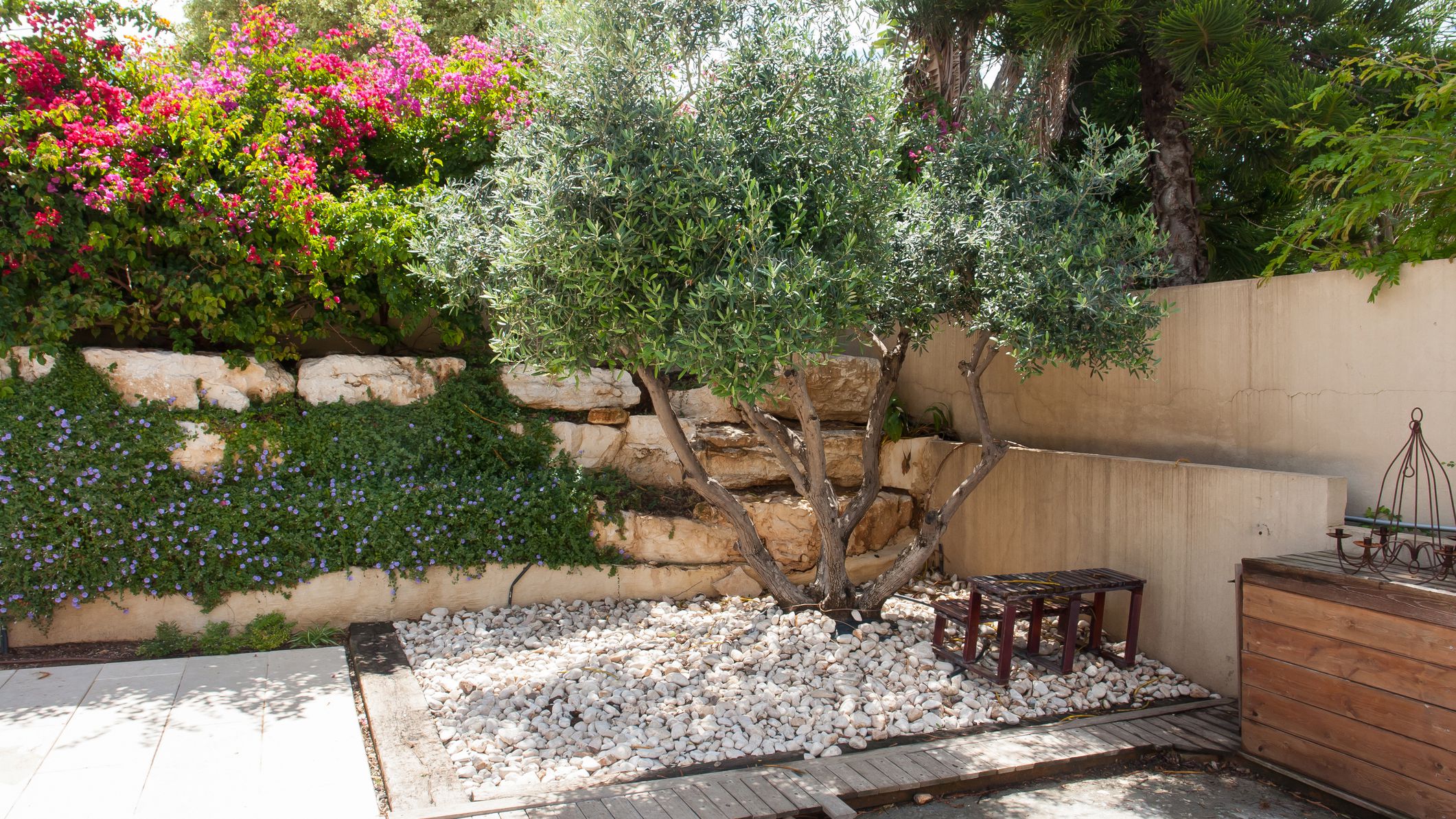
PRO TIP
Keep in mind to choose the plants that are fruitless like Monher or Wilsonii.
Fruitless olive is a perfect choice for pool plants and has soft willow-like foliage.
Olive trees grow slowly, and they reach up to the height from 25 to 30 feet.
These trees should be planted in deep and rich soil.
They grow adequately in coastal regions and areas that have dry summers. They do not have fruits, which makes them a perfect choice for pool plants and patios.
Final Words
Pool plants are a perfect choice to create beautiful landscaping around the pool. If you already have trees do not take them down instead of trim them.
READ MORE

